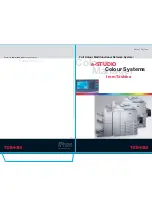
288
Copyright © Acronis, Inc., 2000-2010
A volume, also sometimes called RAID 0, consisting of equal sized stripes of data, written across
each disk in the volume; it means that to create a striped volume, a user will need two or more
dynamic disks. The disks in a striped volume don’t have to be identical, but there must be unused
space available on each disk that you want to include in the volume and the size of the volume
will depend on the size of the smallest space. Access to the data on a striped volume is usually
faster than access to the same data on a single physical disk, because the I/O is spread across
more than one disk.
Striped volumes are created for improved performance, not for their better reliability - they do
not contain redundant information.
Mirrored Volume
A fault-tolerant volume, also sometimes called RAID 1, whose data is duplicated on two identical
physical disks. All of the data on one disk is copied to another disk to provide data redundancy.
Almost any volume can be mirrored, including the system and boot volumes, and if one of the
disks fails, the data can still be accessed from the remaining disks. Unfortunately, the hardware
limitations on size and performance are even more severe with the use of mirrored volumes.
Mirrored-Striped Volume
A fault-tolerant volume, also sometimes called RAID 1+0, combining the advantage of the high
I/O speed of the striped layout and redundancy of the mirror type. The evident disadvantage
remains inherent with the mirror architecture - a low disk-to-volume size ratio.
RAID-5
A fault-tolerant volume whose data is striped across an array of three or more disks. The disks do
not need to be identical, but there must be equally sized blocks of unallocated space available on
each disk in the volume. Parity (a calculated value that can be used to reconstruct data in case of
failure) is also striped across the disk array. And it is always stored on a different disk than the
data itself. If a physical disk fails, the portion of the RAID-5 volume that was on that failed disk
can be re-created from the remaining data and the parity. A RAID-5 volume provides reliability
and is able to overcome the physical disk size limitations with a higher than mirrored disk-to-
volume size ratio.
Create volume wizard
The
Create volume
wizard lets you create any type of volume (including system and active), select a
file system, label, assign a letter, and also provides other disk management functions.
Its pages will enable you to enter operation parameters, proceeding step-by-step further on and
return to any previous step if necessary to change any previously selected options. To help you with
your choices, each parameter is supplemented with detailed instructions.
If you want to create a volume
:
Run the
Create volume
wizard by selecting
Create volume
on the
Wizards
bar, or right-click any
unallocated space and select
Create volume
in the appearing context menu.
Select the type of volume being created
At the first step you have to specify the type of volume you want to create. The following types of
volume are available:
Basic
Simple/Spanned
















































